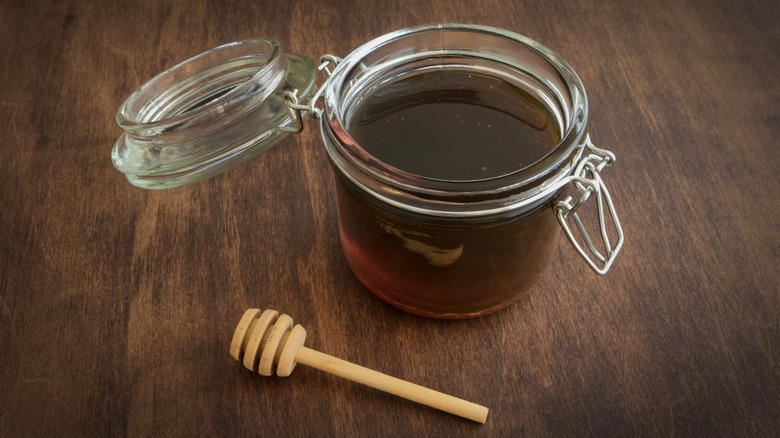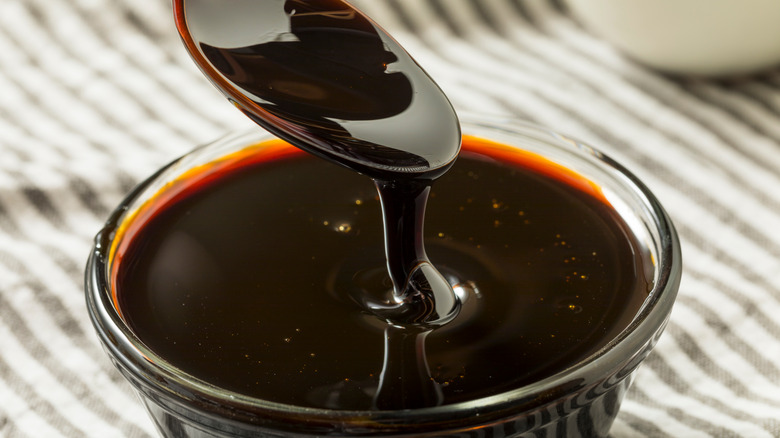The Subtle Flavor Difference Between Sorghum And Molasses
If you've paid attention to food trends over the past few years, then you've probably noticed that in addition to increased consumer demand for "alternative" grains such as amaranth, quinoa, and spelt, more and more types of "alternative" sweeteners have hit the market, as well. For folks looking for healthier options to sweeten their coffee, smoothies, and desserts — or those who simply want a change of pace — natural sweeteners such as monk fruit, coconut sugar, and brown rice syrup can be used, according to Dr. Axe.
One plant that straddles both categories — grain and sweetener — is sorghum, a nutrient-packed, high-protein, gluten-free ancient grain that can be used in grain bowls, soups, and baked goods and whose stalks can also be juiced for a sweet liquid that can then be reduced into a flavorful syrup (via School of Permaculture). If you've ever sampled sorghum syrup, then you know that its appearance and flavor are quite similar to that of molasses, another beloved sugar alternative. But the two syrups aren't exactly alike.
Molasses is thicker and sweeter than sorghum
If you've spent time in the American South, you likely know that sorghum syrup is nothing new, having been cultivated in the region since the 17th century. A crop that arrived with the African slave trade, according to Food & Wine, the sorghum plant caught on in the south, its resistance to heat and drought making it an important part of the local economy. For centuries, Southern Living writes, Southerners have poured sorghum syrup over hot buttered biscuits, baked fruit, and cornbread, as well as worked it into local pies.
Also implicated in the American slave trade, according to SFGate, molasses, too, has been a common commodity in the South and across the U.S., sweetening everything from baked beans to gingerbread cookies. The two syrups are enjoyed in similar ways, but according to Food & Wine, sorghum is thinner in consistency, lighter in color, and slightly less intensely sweet than sugarcane-derived molasses. Even so, the two can be substituted one-for-one in any recipe, according to the National Sweet Sorghum Producers & Processors Association, or you can use a combination of the two for a balanced, rich flavor combination in your favorite dessert.

